Foreign tourist arrivals in Spain plummeted by 75 percent year-on-year in July despite the reopening of borders in the world's second-most popular tourist destination, official figures showed Tuesday.
July was the first full month of Spain's new normality since Madrid reopened its frontiers on June 21st and lifted a state of emergency that ushered in one of the tightest lockdowns in the world.
Tourism is a pillar of the Spanish economy, accounting for some 12 percent of gross domestic product (GDP) and 13 percent of employment.
Foreign tourist spending also slumped in July, falling by 79.5 percent compared with the same period a year earlier, figures released by the National Institute of Statistics (INE) showed.
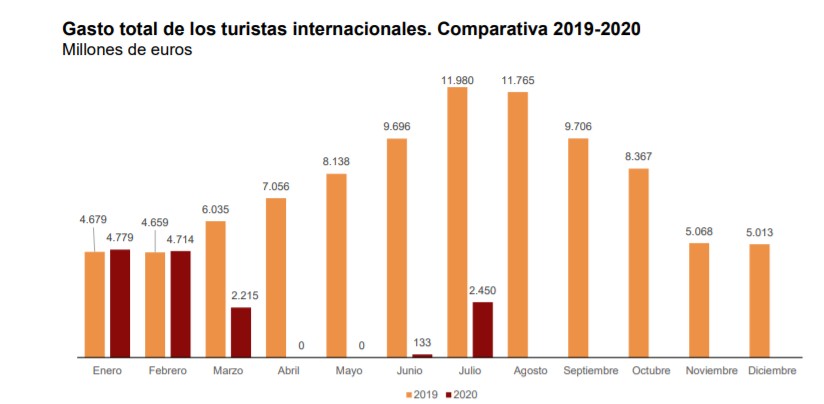
Above chart compares the tourist spend in Spain in 2020 (dark red) compared to 2019 (orange) and in millions below.
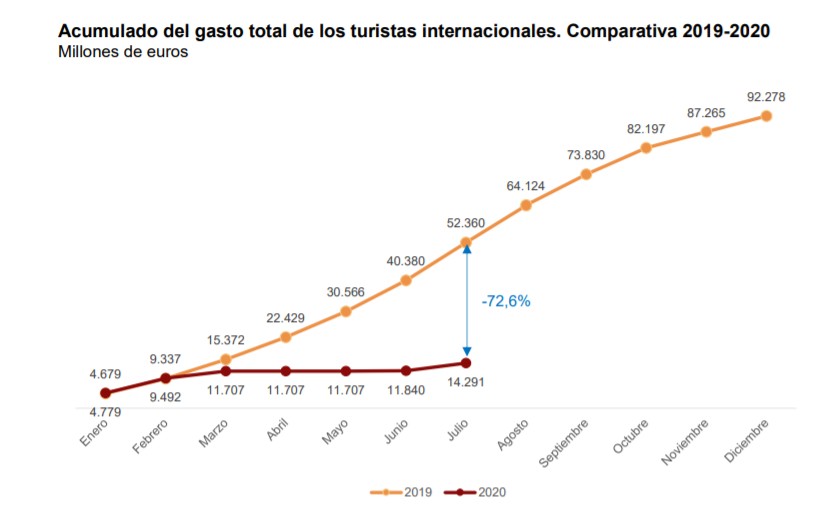
Per tourist, the average amount spent was down 17.8 percent as seen in chart below, which also shows average spending per tourist by country of residence.

But after more than three months of lockdown, the figures showed a big increase on June, with foreign tourist arrivals 12 times higher, and visitor spending 18 times higher.
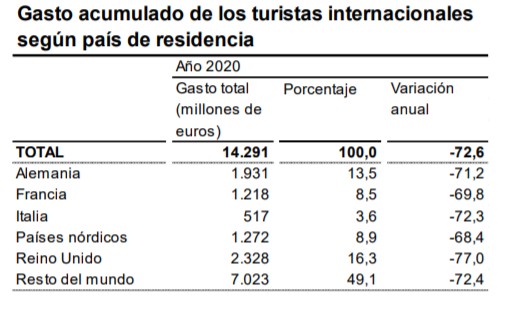
In July, the largest number of incoming tourists were French, who accounted for a quarter of all arrivals, followed by Germans then Britons, who are normally the largest national visitor group but were deterred when quarentine was imposed on travellers returning from Spain.
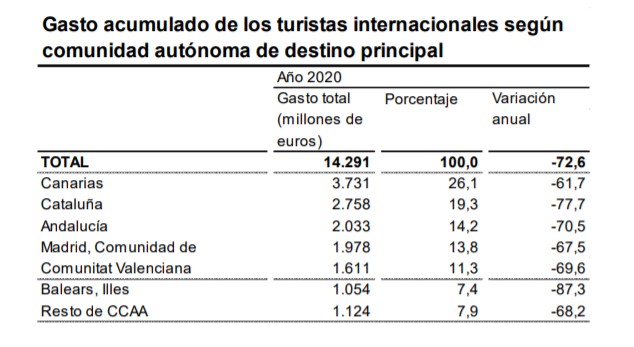
Above chart shows how many millions were spent in each of top six of Spain's regions and the variation on last year.
The Balearic islands were the most popular destination in July, accounting for nearly a quarter of all visitors to Spain, followed by the northeastern Catalonia region then Valencia in the southeast.
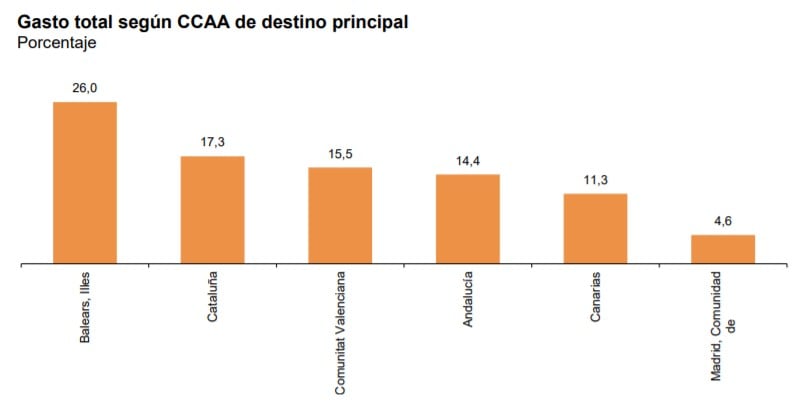
Above chart shows the percentage of spend by foreign tourist in top six of Spain's regions.
Due to the drop in arrivals, hotel reservations slumped by 73.4 percent in July, while other tourist accommodation bookings (such as apartments and campsites) fell by 49.9 percent compared with July 2019, recent INE figures show.
When the borders reopened, Spain had hoped to claw back some of its losses by billing itself as a safe tourist destination. But it has since been battered by an explosion of new Covid-19 cases, prompting many countries to issue travel warnings or impose quarantine restrictions on arrivals from Spain.
READ ALSO:
- When will Americans be allowed to travel to Spain again?
- LATEST: What are the rules on travelling to Spain?


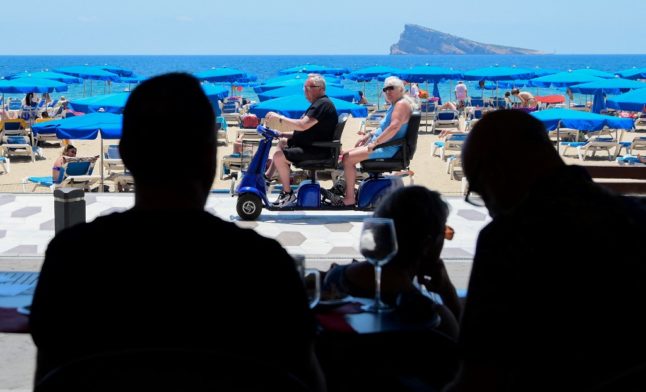
 Please whitelist us to continue reading.
Please whitelist us to continue reading.
Member comments